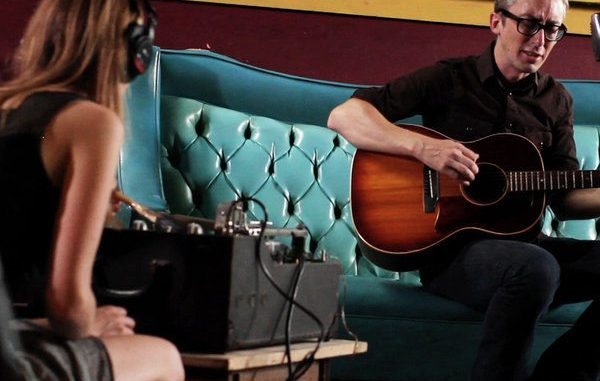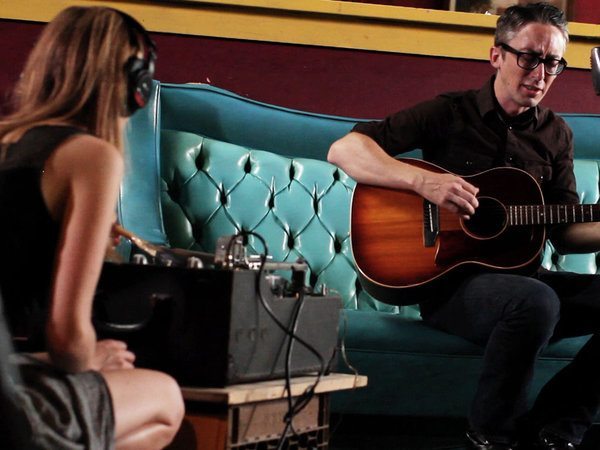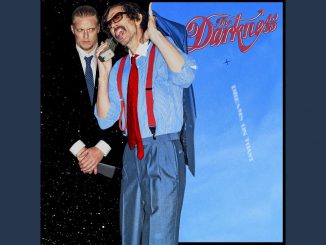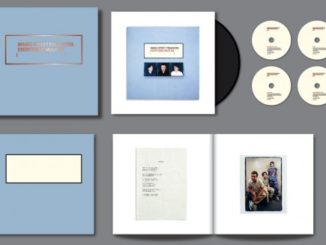
’78 Project’ records new artists in a very old way

Blues legend Muddy Waters said he heard himself for the first time in 1941.
It was when folklorist and ethnomusicologist Alan Lomax recorded him in his Mississippi home. In the 1930s and early ’40s, Lomax traveled the country with his trusty Presto machine, making field recordings of American folk musicians, live at 78 revolutions per minute, onto lacquer-coated “acetate” discs.
That Saturday afternoon with Muddy Waters changed the way Waters viewed his music – and it changed blues forever.
Inspired by Lomax’s work, from August 2012 to September 2013 director/producer Alex Steyermark and writer/producer Lavinia Jones Wright embarked on a cross-country journey, to document present-day musicians performing folk songs. Both grew up in the Philadelphia area. They recorded the artists with a refurbished 1930s Presto direct-to-acetate disc recorder.
The result is their documentary film, The 78 Project. It will be screened at the International House on Thursday night.
The rules were simple: Each artist got to perform one song, acoustically, into one mike, in only one take. Steyermark and Wright gave artists a list of old folk songs in the public domain to choose from.
As the needle carves out the audio on the disc, the artists, like their predecessors, have to make a permanent impression.
“That’s what’s so interesting to us,” said Steyermark. “We work with people who are really experienced, and suddenly they’re really vulnerable.”
Right before the needle drops, there is an almost reverent silence as the lacquered disc spins. “It creates this intense amount of focus – and definitive performances,” said Wright. “The stakes are so high that they achieve a high level of musicianship.”
Today, recording studios have become laboratories of the redo, the retouch, and the remix. So much so, Wright says, that recording the Presto way can relieve artists of “the possibility of infinite recording, which can be a burden.”
Sometimes imperfection is part of the process and the appeal. After hearing their work played back on the Presto 78, Wright says, artists are “all really emotional, and the reactions are always really intense.” Where does this emotion come from? Steyermark says it could be that “they’re hearing themselves sound like the music that inspired them.” Songs recorded five minutes ago sound as though they were recorded 80 years ago, aligning them with a strong heritage of music hundreds of years in the making.
In the film, we see the Rev. John Wilkins, a blues and gospel musician, perform “I Want Jesus to Walk With Me” in Hunters Chapel Missionary Baptist Church, where he is pastor, in Como, Mo. His father, the Rev. Robert Wilkins, was a country blues guitarist and one of the artists recorded by Lomax himself.
“There was a moment where he could really hear how much he sounded like his father,” said Wright.
Kentucky-bred and Brooklyn-based Dawn Landes performed “The Brown Girl,” a British folk tune found in the 19th-century collection known as the Child Ballads. Her performance was recorded in the Brooklyn Botanical Gardens. She loves the retro feel of the project.
“I’m a recording enthusiast, and I was really excited about the mechanics,” said Landes.
She said that when she listened to the acetate she had just made, it sounded like the music she loved from the early 20th century. Struggling to describe how it felt hearing her recording, she said, “It felt unique.”
In an era where we can miss special moments because we’re so busy trying to take snapshots with our mobile phones, Steyermark said, “it becomes apparent to the artist that a recording is really capturing a moment in time. That becomes the central point of what we’re trying to explore.”
Joe Jack Talcum is lead singer of punk-rock band the Dead Milkmen, formed in Philly in 1983. He will be performing and recording live as part of the 78 Project at the International House screening. He says that when he got the invitation, he accepted without hesitation.
“I thought it was a great opportunity,” Talcum said. “I love records, and I’ve recorded on a 45, 331/3, but never a 78.”
But isn’t punk music all about high energy and electronics? Yes, but Talcum said there’s something romantic about recording on the Presto.
The 78 Project explores how certain songs woven into the American songbook, and thus into our collective memories, connect with other songs, old and new, in different genres. They’re embedded in our music, and thus in us.
Consumers are looking to go back to old-school listening and recording. What was one of Sony’s newest gadgets to be released in 2015? The new Walkman ZX2, selling for a whopping $1,200. What do you get for all that money? A high-end, digital approximation of the Walkmans of old, first tapes and later CDs. And in 2014, sales of vinyl recordings increased 38 percent (so people must be using record players a lot more). Neil Young recorded his recent album, A Letter Home, in a 1947 Voice-o-Graph recording booth belonging to rocker Jack White.
But The 78 Project isn’t a trend calculator. The documentary also tells the story of the great field recordings, with insights from historians, technologists, and craftsmen.
With screenings across the country and in England, a soundtrack, and plans to extend their efforts in new directions, Steyermark says the 78 Project keeps going, and “the film is very alive because of that.”
Thanks to Sofiya Ballin Inquirer Staff Writer
Vintage vinyl (and a even a few ’78s) available at eil.com




Be the first to comment